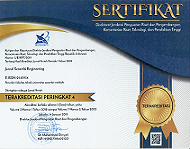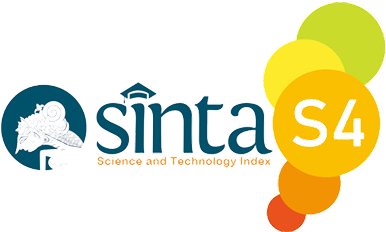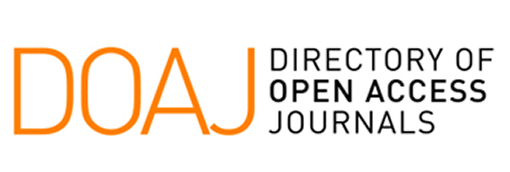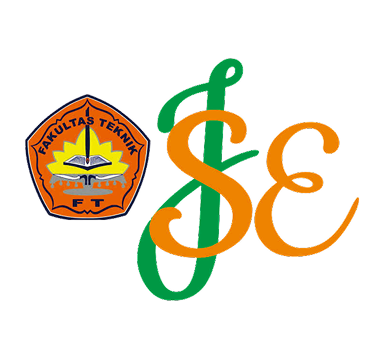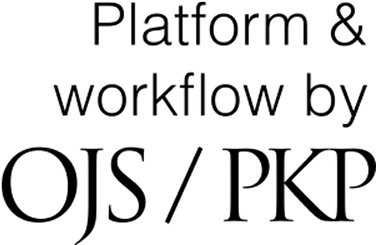Pendekatan Ekonomi Sirkular Dalam Industri Tembakau : Mendaur Ulang Limbah WWTP Menjadi Kompos Kaya Nutrisi Melalui Proses Anaerobik
Keywords:
Anaerobic Digestion, Circular Economy, Compost, Industrial Sludge, Tobacco IndustryAbstract
The implementation of circular economy principles is crucial for industries to achieve sustainability, including the tobacco industry which generates significant organic waste in the form of sludge from its Wastewater Treatment Plant (WWTP). This study demonstrates a circular economy model by upcycling WWTP sludge into nutrient-rich compost using anaerobic digestion (AD) technology. The AD process was conducted on the sludge at a laboratory scale under mesophilic temperature conditions. The quality of the final compost product (digestate) was evaluated based on physicochemical parameters and compared with national compost quality standards. The results showed that the AD process successfully transformed the sludge into a stable and nutrient-rich material. The final product's C/N ratio reached 20:1, which is ideal for soil application. The contents of total N (1.6%), Phosphorus (P₂O₅ 1.1%), and Potassium (K₂O 0.9%) indicate its potential as an effective organic fertilizer. The quality of the compost produced was proven to meet the SNI 19-7030-2004 quality standard. This study confirms that upcycling sludge via AD is a feasible and effective approach to implementing a circular economy in the tobacco industry, turning a waste burden into a valuable product and supporting sustainable agriculture.
References
[1] H. Hidayat and A. H. P. Hamzah, “Implementasi Konsep Ekonomi Sirkular Untuk Mewujudkan Industri Karet Remah Berkelanjutan,” vol. 14, no. 01, pp. 1–15, 2024.
[2] P. Suwignyo et al., “Literature Review Model Circular Economy Dan Potensi,” vol. 4, pp. 122–131, 2021.
[3] M. Geissdoerfer, P. Savaget, N. M. P. Bocken, and E. Jan, “The Circular Economy e A new sustainability paradigm ?,” J. Clean. Prod., vol. 143, pp. 757–768, 2017, doi: 10.1016/j.jclepro.2016.12.048.
[4] J. Korhonen, A. Honkasalo, and J. Seppälä, “Circular Economy : The Concept and its Limitations,” Ecol. Econ., vol. 143, pp. 37–46, 2018, doi: 10.1016/j.ecolecon.2017.06.041.
[5] Pertiwi, Ikayana, and Gaguk Apriyanto. "Pengaruh Kinerja Keuangan Terhadap Strategi Bisnis Di Era Society 5.0 Dengan Keunggulan Kompetitif Sebagai Variabel Intervening." Jurnal Ekonomi Manajemen 29.1 (2025).
[6] Y. Kurniawati and N. Maqfiroh, “Analisis Effluent Limbah Cair PT DNP Indonesia. Pulogadung, Jakarta Timur,” J. Ilm. Kesehat., vol. 11, no. 1, pp. 64–72, 2019.
[7] W. S. Mangoting, Y. M. Sari, and R. S. Sarungallo, “Efeksi Pengolahan Air Limbah padtivitas Penerapan Instalaa PT Geoservices Effectiveness of the Implementation of Wastewater Treatment Facilities at PT Geosesrvice,” vol. 2, pp. 12–22, 2024.
[8] G. R. Cahyaningnugroho and E. N. Hidayah, “Potensi Pemanfaatan Lumpur Dari Proses Pengolahan Air Limbah Industri,” Nusant. Hasana J., vol. 3, no. 2, pp. 22–26, 2023.
[9] M. F. Ummah and W. Herumurti, “Pengeringan Lumpur Ipal Biologis Pada Unit Sludge Drying Bed (SDB),” J. Purifikasi, vol. 18, no. 1, pp. 39–48, 2018.
[10] V. K. Nguyen et al., “Review on pretreatment techniques to improve anaerobic digestion of sewage sludge,” Fuel, vol. 285, no. April 2020, p. 119105, 2021, doi: 10.1016/j.fuel.2020.119105.
[11] Stylianou, Marinos, et al. "Electrochemical treatment of cattle wastewater samples." Waste and Biomass Valorization 11 (2020): 5185-5196.
[12] J. Kazimierowicz and D. Marcin, “Aerobic Granular Sludge as a Substrate in Anaerobic Digestion — Current Status and Perspectives,” 2022.
[13] P. Ghosh, G. Shah, S. Sahota, and L. Singh, Biogas production from waste : technical overview , progress , and challenges. INC, 2020. doi: 10.1016/B978-0-12-821264-6.00007-3.
[14] A. Singlitico, J. Goggins, and R. F. D. Monaghan, “Evaluation of the potential and geospatial distribution of waste and residues for bio-SNG production : A case study for the Republic of Ireland,” Renew. Sustain. Energy Rev., vol. 98, no. September 2018, pp. 288–301, 2020, doi: 10.1016/j.rser.2018.09.032.
[15] A. Raheem et al., “Opportunities and Challenges in Sustainable Treatment and Resource Reuse of Sewage Sludge : A Review,” Chem. Eng. J., 2017, doi: 10.1016/j.cej.2017.12.149.
[16] A. N. Bimanto and K. Sa, “Di PT Energi Agro Pengolahan Limbah Spent Wash Dengan Metode Anaerobic Digestion Nusantara,” vol. 6, no. 9, pp. 354–361, 2020.
Downloads
Published
Issue
Section
License
Copyright (c) 2025 Tri Figur Fuad, Abdul Wahid (Author)

This work is licensed under a Creative Commons Attribution 4.0 International License.

